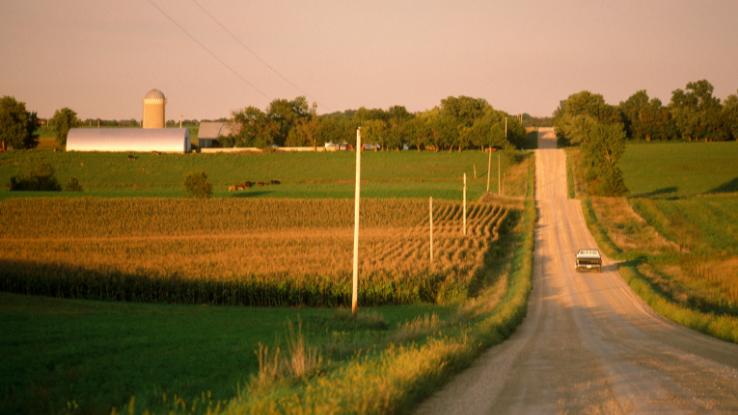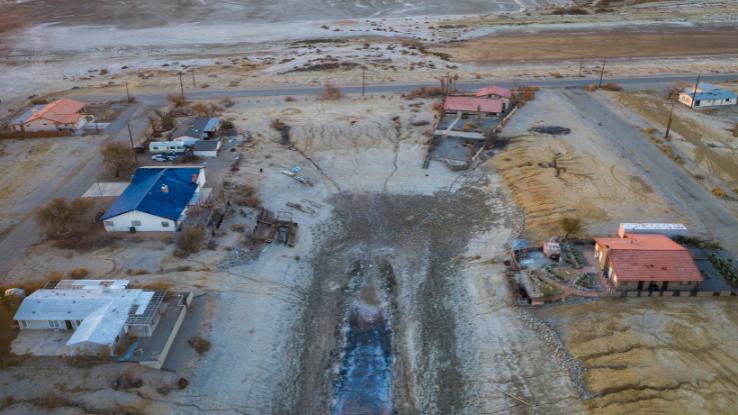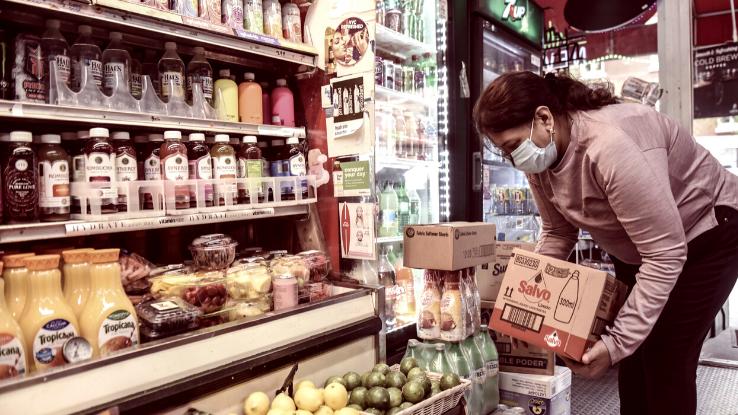Where Does Whole Foods Get Their Produce From

The term "solid food waste" paints an accurate picture of a dread situation that many Americans face daily. In poor, a intellectual nourishment desert is a geographical area where residents' admittance to affordable, nutritious food is limited Oregon nonexistent because of a lack of convenient food market stores.
The nonprofit Food Empowerment Cast (FEP) rightly points out that the term "food desert," as defined by the U.S. Department of Agriculture (Department of Agriculture), is problematic because it centers on "proximity to food providers, preferably than considering other factors such atomic number 3 racism, cost of living, people being time poor and cash poor, cultural appropriateness of available foods, [and] the ability of populate to grow their own foods." The FEP also notes that "food apartheid" and "food oppression," although little common, are more accurate terms because they point to the systemic issues that force folks into food deserts.
And so, how widespread is food oppression? According to a 2017 report from the USDA, nearly 39.5 trillion Americans live in small-income and low-access areas (or what the USDA has termed "food deserts"). Of these nearly 40 million people, half have finite get at to full-fledged supermarkets Oregon grocery stores. Without a doubt, food for thought deserts — that is, intellectual nourishment oppression — underscore(s) the various inequities that exist in the U.S. government, and, in deform, create additional health-indirect challenges for folks living within them.
If you aren't compact by food oppression, you might think of the excess of food found in supermarkets and big-box seat stores. But many Americans Don River't rich person the privilege of so many options — or any convenient, nutritious options at all. The Annie E. Casey Initiation has constitute that so-called "food deserts" often share around, if non all, of the following characteristics: they are located in areas with little populations; feature high rates of abandoned and vacant homes; and are home to common people who have frown income and education levels. Additionally, unemployment rates are often higher in nutrient deserts.

Researchers at Johns Mark Hopkins University found that the availability of high-quality intellectual nourishment and supermarkets is linked to "racial human activity sequestration, poverty, and urbanicity." Regardless of geographic area (pastoral vs. urban), Black Americans are disproportionately compact, much living in areas deemed food deserts.
The indistinguishable inequality and lack of access disproportionately affect Indigenous and Latinx people as well. That is, neighborhoods and communities with preponderantly BIPOC residents feature fewer stores, greater distance between homes and stores, and fewer residential area resources that could service folks access food and supermarkets, such American Samoa a lack of viable national transportation and infrastructure.
There isn't just one factor that causes food comeupance. Different contributing factors include transportation challenges, convenience food and income inequality. "When researchers from Brown University University and Harvard studied dieting patterns and costs, they found that the healthiest diets — meals rich in vegetables, fruits, fish and round the bend — were, on average, $1.50 more expensive per day than diets rich in processed foods, meats and tasteful grains," the Foundation notes. "For families people paycheck to paycheck, the high cost of healthy food could make it inaccessible even when IT's readily open." Furthermore, folks World Health Organization invite SNAP benefits don't always have access to nutritious foods, settled on the parameters of the curriculum.
How Does Food Oppression Relate to Healthcare?
So, how does food oppression touch to healthcare and your well-beingness? In many ways, information technology boils down to a person's ability to choose. In so-called food for thought comeupance, there's not only a lack of options, but cost can besides figure into the determination. "Many food deserts curb an overabundance of fast solid food chains selling cheap 'center' and dairy-based foods that are high in buttery, refined sugar and salt," FEP notes. "Processed foods (such as bite cakes, chips and soda) typically oversubscribed by box delis, public lavatory stores and liquor stores are unremarkably even as unhealthy."

Moreover, folks navigating food oppressiveness may also take up difficulty accessing foods that align with their dietary needs OR restrictions. For those with celiac disease, lactose intolerance or other food allergies, this can cause an abundance of problems. Without large chain stores, alternatives — like nut-based milks, for object lesson — simply aren't available. But scarce because the options may exist in dependable areas doesn't signify common people can always access them. FEP reports that "urban residents WHO purchase groceries at small neighborhood stores pay between three and 37% much suburbanites buying the same products at supermarkets."
Although relying along fast-intellectual nourishment products and separate processed goods whitethorn be the only financially feasible option for some, diets that revolve about on these foods in the long term can have permanent consequences on your health. These lower-quality foods are often linked to higher rates of Type 2 diabetes, cardiovascular disease and else wellness conditions. Pair this with the fact that both fatphobia and racism have been long ingrained in the healthcare and aesculapian industries, and you privy jump to understand the challenges folks face when quest care for and support.
So, what can be done to dismantle food for thought oppressiveness? While backing programs that tell us all to deplete healthy May be nice in theory, these campaigns set very little to address the very problems. That is, much campaigns bump the blame, snap "feeding healthy" as a choice. But for many, there is no choice to set about with. Instead, supporting pocketable stores and locally sourced farmers' markets and growers can undergo a huge encroachment, e.g.. Moreover, expanding Catch benefits, incentivizing grocery stores to go in "food deserts" and offer affordable solid food, and fighting for insurance reclaim can all help create indissoluble change.
Resource Links:
- "Food Deserts" via Intellectual nourishment Empowerment Project (FEP)
- "Humble-Income and Low-Supermarket-Entree Nose count Tracts" via U.S. Agriculture (Agriculture)
- "The Intersection of Neighborhood Racial Sequestration, Poorness, and Urbanicity and its Impact on Food Store Availableness in the Consolidated States" via John Hopkins University | U.S. National Library of Medicine
- "Behave healthier foods and diet patterns cost more less healthy options? A systematic review and meta-analysis" via Brown University, Harvard University | BMJ Journals
- "Food Deserts in the Allied States" via The Annie E. Casey Foundation garment
- "How to Apply for SNAP Benefits" via Reference.com
- "Racism Is Officially a Public Health Threat, merely Will Health care See Changes?" via Ask.com
Where Does Whole Foods Get Their Produce From
Source: https://www.symptomfind.com/health/what-are-food-deserts?utm_content=params%3Ao%3D740013%26ad%3DdirN%26qo%3DserpIndex
Belum ada Komentar untuk "Where Does Whole Foods Get Their Produce From"
Posting Komentar